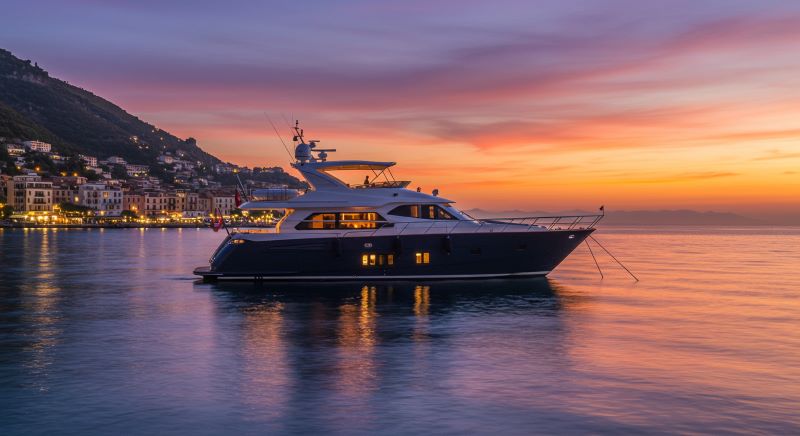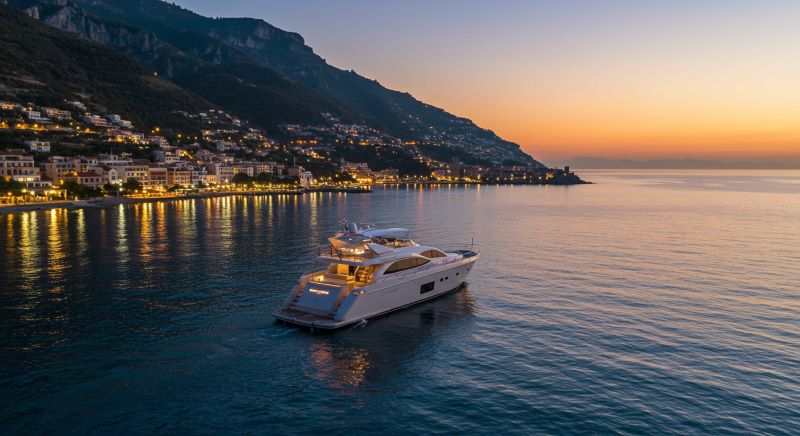DIY Stern Thruster Installation
Adding a Vetus Marine stern thruster can completely change how your boat handles in tight spaces. For single-engine boats or those with outboards, control in reverse is often limited. A thruster helps the stern move sideways at slow speeds — no throttle juggling. This makes docking smoother, especially when the boat does not back well or wind pushes you off line. Many kits are built with the DIY'er in mind and take just a few hours to install with basic tools.
What are stern and bow thrusters, and why do I need them?
🎯 Sideways Movement
Both thrusters move the boat sideways, not forward or back
⚓ Stern Control
Stern thrusters help during reverse throttle
🚢 Bow Control
Bow thrusters help turn the bow while docking
🛡️ Confidence
They solve one of the most intimidating aspects of boating — docking
Ideal for boats with a bit of freeboard and limited low-speed control
Understanding the difference between stern and bow thrusters
Bow thrusters are installed near the front, helping you pivot the bow in tight turns.
Stern thrusters are mounted near the transom or swim platform, giving you better control when backing in. They work especially well for outboards and boats that don't respond well to reverse.
When to choose a stern thruster instead of a bow thruster
Pick a stern thruster if you often dock stern-first, have limited bow access, or run a boat with an outboard. It's also easier to install using a bracket, especially if your battery switch and 12V setup are already near the transom.
Benefits of installing thrusters for improved maneuverability
Bow and stern thrusters aren't just for large vessels. Even mid-sized boats benefit from the ability to move the boat laterally, hold position, or respond quickly without needing to throttle hard or straighten the rudder. Benefits include:
- Easier entry into slips
- Better response in reverse throttle
- Control even with limited low-rpm thrust
- Reduced risk of collision during docking
- Confidence in tight or windy spots
For boat owners, this means fewer stressful moments and more enjoyable time on the water.
How do I select the right thruster for my boat?
Not all boats need the same kind of thruster. A small outboard setup might need a compact stern unit, while a heavy cruiser benefits from both bow and stern thrusters. Think about where your boat gives you trouble — and where an extra push would make docking easier. Match your system to your habits, not just your hull.
Comparing 12V and 24V thruster systems
| Feature | 12V Thruster | 24V Thruster |
|---|---|---|
| Power | Moderate | Higher thrust output |
| Setup | Simple (1 battery bank) | Needs two 12V batteries in series |
| Best for | Small to mid-size boats | Larger boats, yachts |
| Cable size needed | Thicker | Thinner (less heat) |
| Cost | Lower | Slightly higher upfront |
Determining the appropriate thrust for your vessel
Every boat reacts differently. But here's a rule: if your stern swings in wind, or the propeller feels weak in reverse, you probably need more torque. Look at manufacturer charts by boat length. If you're between two sizes — go stronger. Thrusters aren't something you want to feel underpowered.
What tools and materials do I need for a DIY thruster installation?
Before starting your install, make sure you have all tools and supplies ready. A missing sealant or wrong drill bit can delay the whole process. With the right prep, even a first-time DIY'er can handle thruster installation confidently.
Essential tools for a successful installation
🔧 Basic Tools
Drill, hole saw, sealant gun, socket set, multimeter for checking voltage and cable continuity
💡 Work Lighting
Headlamp or flexible work light for working near transom or under deck
🛠️ Marine Supplies
Marine sealant, through-hull fittings, marine-grade wire, waterproof connectors
🔒 Safety Equipment
Safety glasses, dust mask, work gloves, non-slip shoes
Choosing the right thruster kit for your boat
Select a kit based on your boat type, hull access, and handling needs. For boats with easy access to the bow, tunnel thrusters work best. If you're working on a stern-only setup or outboard boat, go with an external or bracket-mounted thruster. Make sure the kit includes the motor, controller, fuse, mounting hardware, and clear instructions. Double-check that it's compatible with your voltage system — 12V or 24V.
Additional materials you may need for the project
Depending on your boat's layout, you may need extra cable, battery terminals, a battery switch, or marine sealant. If installing near the swim platform or under the deck, waterproof connectors and zip ties will help with clean routing. Plan for cleanup too — rags, acetone, and gloves make the process smoother. Always measure cable runs in advance and buy a little extra, just in case.
Can you walk me through the stern thruster installation process?
Installing a stern thruster isn't as complex as it seems. With proper prep and a clear plan, most boaters can finish it in a weekend. Start with a dry dock or safe, stable access to the transom. Make sure you've reviewed the installation manual for your kit and double-checked your power source. A clean, well-marked work area will save you hours later.
Preparing your boat for stern thruster installation
- Choose a flat, unobstructed section of the transom
- Avoid mounting near the exhaust, swim platform, or drain outlets
- Clear inside access for wiring and sealing
- Disconnect batteries and label cables for safety
- Test-fit the bracket or tunnel before drilling
- Clean and sand the surface where the propeller unit will sit
If using an external thruster like Sideshift, prep includes aligning the unit and sealing the bolt holes.
Step 1: Mark and Prepare
Mark the mounting location on the transom using the template and drill pilot holes for the bracket and wiring access.

Step 2: Apply Sealant and Mount
Apply marine-grade sealant to all contact areas and secure the thruster bracket evenly with stainless bolts.

Step 3: Electrical Connection
Connect power cables, control wiring, and install the control panel. Use proper marine standards for all electrical work.

Step 4: Testing and Final Setup
Test the system dockside before heading out. Confirm response in both directions and check voltage under load.

Wiring and connecting the thruster to your boat's electrical system
Electrical setup is key to performance. Poor wiring can limit thrust or damage components, so follow proper marine standards. Wiring essentials include:
- Dedicated 12V or 24V battery connection
- Inline fuse or circuit breaker near the power source
- Heavy-duty marine cables, properly crimped and heat-sealed
- Clean routing to avoid sharp bends or chafe points
- Motor control unit mounted in a dry, accessible location
- Helm switch or joystick wired directly to the control unit
What are some pro tips for a successful DIY thruster installation?
A bow or stern thruster install may seem complex, but with a plan, it's a great DIY project. Many systems, like Sideshift bow thrusters and stern, are designed to be installed without hauling the boat. Always read the installation manuals, double-check your parts, and measure twice. Most installs take just a few hours to complete with basic mechanical skills.
Common mistakes to avoid during installation
- Skipping dry-fit before drilling
- Using the wrong sealant or not enough
- Forgetting to confirm recommended cable length
- Over-tightening bolts and damaging fiberglass
- Ignoring technical documents or FAQs
- Powering high-thrust units from undersized batteries
Ensuring proper sealing and waterproofing
Sealing is where many DIY installs fail. Clean all contact points before mounting. Use marine-grade sealant, and don't rush curing. For tunnel installs, reinforce the edges from inside the hull.
If using an external mounting bracket, apply extra sealant under the base and torque evenly. This step ensures your stern thruster can also handle vibration and water pressure without leaks.
How do I maintain and operate my new stern and bow thrusters?
After installing your bow thrusters and stern thrusters, regular care keeps them running smoothly. These systems solve one of the most intimidating aspects of boating… especially when docking in wind or current. Even a stern-only thruster can make a big difference in control — but only if it's maintained.
Regular maintenance tasks for optimal thruster performance
Check the propeller for weeds or debris. Clean electrical contacts and inspect for corrosion, especially if installed in-water since launch. Confirm your batteries can handle the load — aim for at least 850 cold cranking amps. If you notice delayed response or noise, it may be time to clean, reseal, or inspect connections.
Using joystick controls and wireless remotes for thruster operation
Joystick and wireless remotes offer smooth, responsive control — perfect for precise movement.
- Keep the boat still, then control the stern or bow with short bursts
- Don't hold buttons — pulse to avoid overheating
- Many remotes (like Kota or Supra) also provide auto-center functions
- Practice near a marker buoy or dock before using in busy harbors
- For outboards, which typically have a single propeller, thrusters fill in the gaps where engines back up or respond slowly
Once mastered, you'll wonder why you didn't install them sooner.
⚠️ Important Safety Notice
Thruster installation involves cutting through the hull and electrical work. If you're not experienced with marine electrical systems or hull modifications, we strongly recommend professional installation. Improper installation can lead to flooding, electrical hazards, or damage to your vessel.